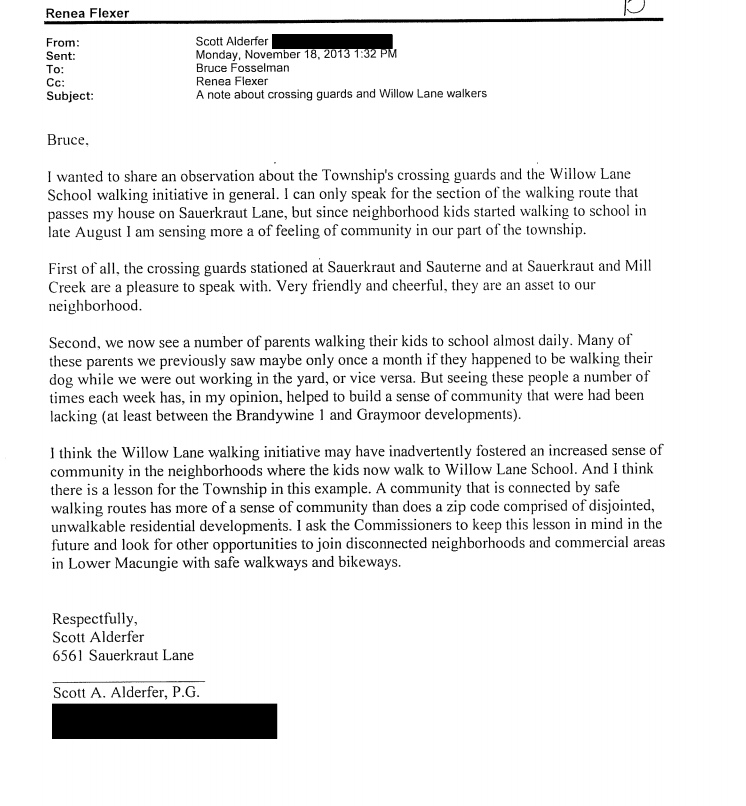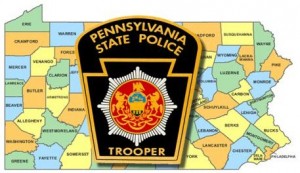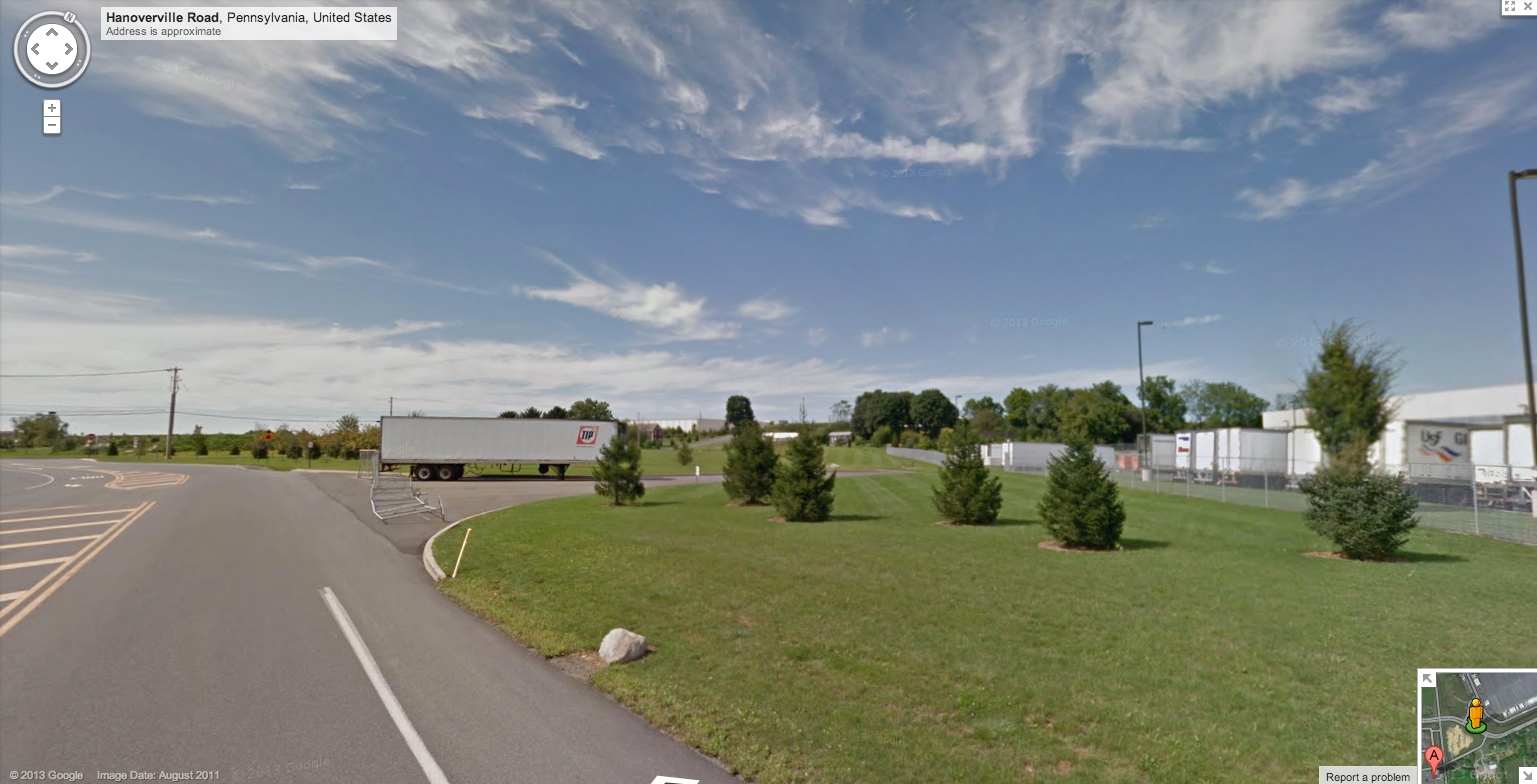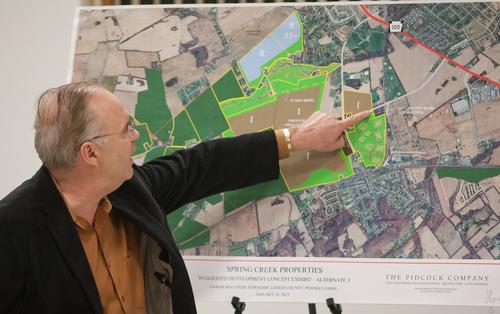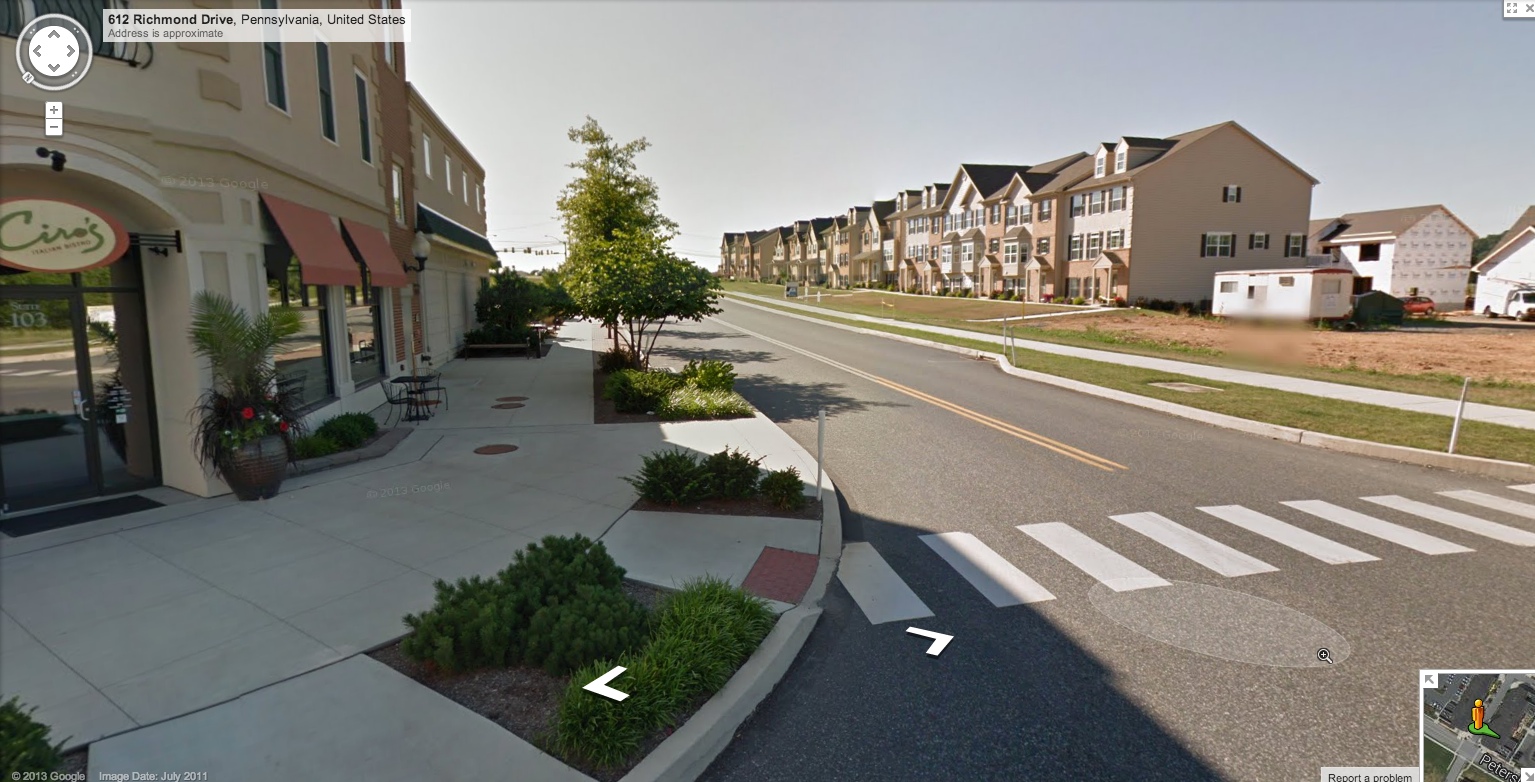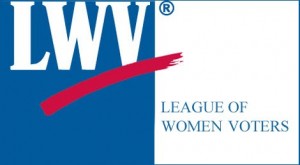Recently the township has asked 2 businesses on Rt. 100 to address signage issues. Wawa and Weis both utilize or have been utilizing temporary “yard signs” and banners on or adjacent to their buildings. Both types of temporary signage are not allowed under our current sign standards.
Why is this important?
When outdoor advertising is improperly placed in our commercial landscape, made too large, gaudy, too many in numbers, or illuminated late into the night, it infringes on our scenic and aesthetic values hurting adjacent property values. The impact is felt not only by the residents in the immediate neighborhood of the signage but also the community at large.
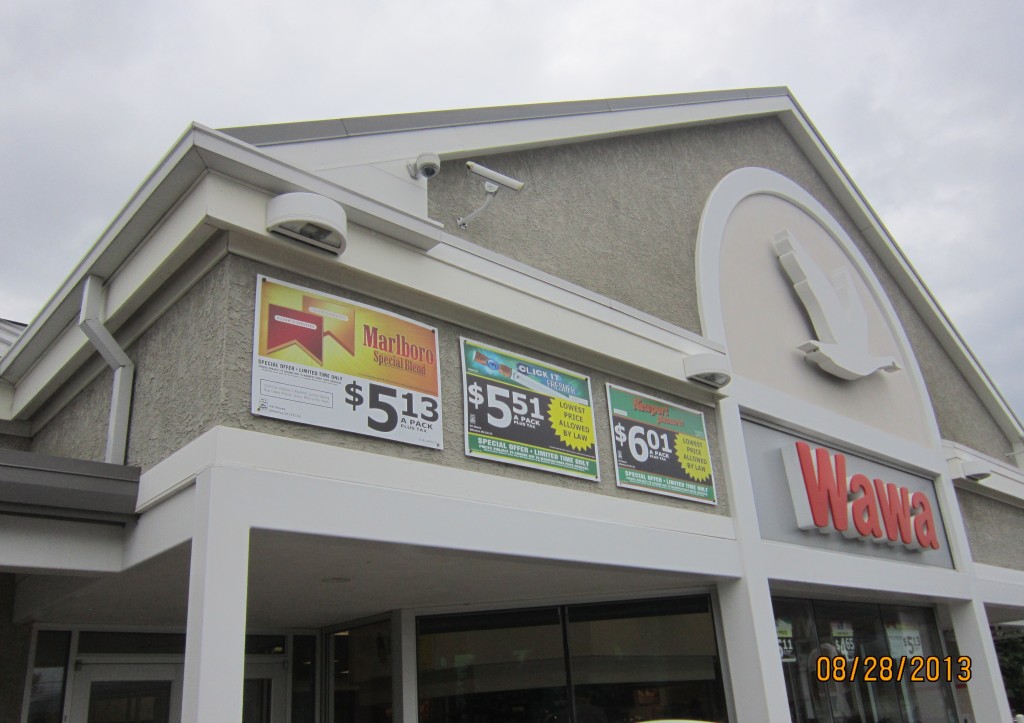
Temporary cigarette signage at WaWa. Enforcement notices have been sent to WaWa to remove.

Temporary Banners at Weis on Rt. 100. Enforcement notices were sent out reminding Weis these temporary banners are not allowed.
When speaking about negative outcomes of growth I hear many residents ask about “not allowing our commercial areas to turn into Macarthur Rd.” I completely agree with this notion and I also use this example often.
Tacky and gaudy outdoor signage is one of the leading indicators of a community in decline. I truly believe that. Lower Macungie is not a community in decline, but this is one of those issues people need to pay close attention to so we can avoid becoming that!
The photograph below is what happens when businesses engage in “one up syndrome” by making signs bigger and bigger. Heading “one up syndrome” off at the pass with consistent attractive sign standards is the only way to stop gaudy signs from dominating the streetscape.
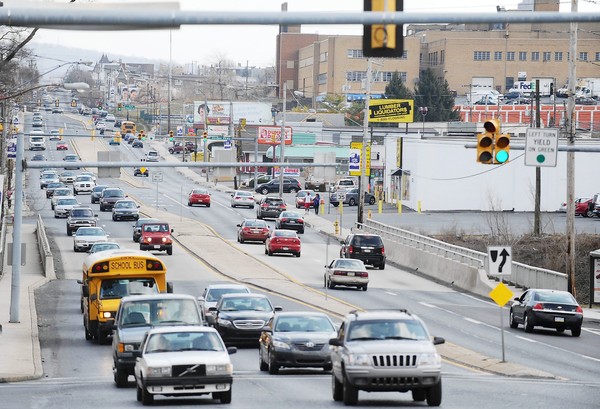
Photo from Morning Call – MacArthor Rd. strip. SIGNAGE GONE WILD!!
In PA it is very common for the local outdoor advertising control laws to be more restrictive than the state law. This is something I am supportive of. I’ve heard that Weis may seek a variance to make their banner signage permanent. This is something I will speak out against if they do so. Both Weis and Wawa already have massive signs indicating the store is located at the location. Additional signage is certainly not a hardship and the variance and precedent should not be granted. Sign variances should only be given when there is a significant topographical issue involved. And then only on rare occasions. There are no such issues on Rt. 100. In fact I can think of no commercial area in the township that would qualify.
Commissioners are on record that they have a desire to build “World Class” commercial zones. I agree with that. Granting exceptions to our signage regulations would be a step in the wrong direction and another step toward the photograph above.
All over the country businesses conform to community standards and do just fine. Below is a local example where a Wawa was made to utilize better looking lower lying signage at their Main Entrance. This particular Wawa is on Lehigh St. is across from the airport and that is the reason for the low sign, but I’ve seen similar signs at other WaWa’s where the limits are imposed because of aesthetic commercial standards. Despite the height restriction I guarantee no one has ever had trouble finding this WaWa or couldn’t figure out exactly what it is and what they sell!!

Here a WaWa conformed to a local restriction with a low lying sign. Somehow people still know it’s a WaWa!
We have to remember. Businesses WANT to be here. We are an attractive location. To remain that way we must be cautious with growth. It is OK for us to take pride in our community! Since businesses want to be here, they will conform to our standards. Same as they do in nice communities all over the country.
If they refuse? Well then another business who will conform will be waiting to take their location.
More examples of franchises that conform to local design standards.
It is also no secret am not a fan of the recent “LED Billboards” that have been springing up across the Valley. One in particular here in the township is shockingly bright at night. It’s a distraction and a public safety issue on top of being gaudy. You can imagine what a whole strip of that kind of signage would look like.

